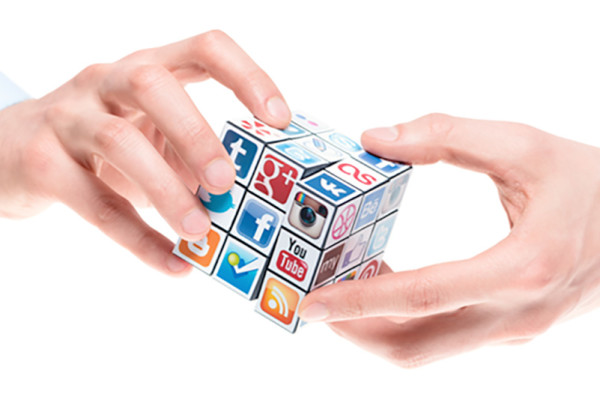You’ve heard the terms thrown around a lot.
Branding. Logos. Identity. What do they all mean? How do they differ? Does their order matter? And if so, which came first, the chicken or the egg? In this 3 part miniseries, I will detail each of these “steps” and explain their differences, their importance, and meaning of each. This week, allow me to introduce Step 1: Branding.
Step 1) Branding: the emotional perception or idea of a company
Step 2) Logo: an identifying mark or icon
Step 3) Identity: visual cues that support the logo and branding
Everything starts with branding.
“What?” you say, “I thought everything started with a logo!”
That’s what I thought too, until I realized that when a logo is designed, it is already building on a brand. It’s just that no one is usually aware of it.
When a logo is designed, it is already building on a brand. Click To Tweet
When a designer asks detailed questions about a company, their history, what they stand for, what words they want associated with them, etc., what the designer’s really doing is building upon a brand. It might be new, or already established, but the answers to these questions will reveal a company’s core brand.
So, what is a brand?
A brand resides only in people’s minds and makes them feel something; it is the emotional idea behind a company. The simpler and the more focused that this idea is, the stronger it will be. Even the name of a company will dictate how it is seen and received (or not).
Then what is branding?
Branding, however, is the act of establishing a brand’s uniqueness and meaning; it is the tangible process of creating and managing the signals that transmit the idea. These are called branding signals, and are what will generate connections to the brand.
Branding signals can be anything that is used to determine what the company stands for; it will convey the promise of the original brand idea. Brand signals are learned associations, much like Pavlov’s dogs, and are often subconscious.
For example, branding signals communicate that a particular brand is relaxing or fun, or will provide security or peace of mind, or that it will give you more energy, increase your sex appeal, or protect your family.
Apart from obvious signals like colors, typography, and imagery, branding signals can also be highly interactive and sensory-based. Intel’s four-tone chime is a brand signal. The shape and feel of a Coca-Cola bottle is a brand signal. Staple’s Easy Button is a signal. Starbuck’s store environment is a brand signal. Practically any and everything that is perceived through one of the five senses can and will be a branding signal.
For a brand and its signals to be successful, they have to:
a) Be different in a meaningful way. There are always competitors who offer an alternative to you, and your brand must give the consumer a good reason to pick you over them.
b) Be simple and focused. Simple things are easier to understand and convey. Your brand must be focused to deliver its message efficiently; broadcasting a general message appeals to no one.
c) Be relevant to the target audience. A brand must appear relevant to its target market or else it won’t capture any attention. Your brand has to answer some type of need or desire for it to be strong and to matter.
For a brand to be successful, it has to be different, simple, and relevant Click To Tweet
In summary:
Establishing a differentiated, simple, and relevant brand is the premise of all successful businesses. Since everything builds on a brand at its inception, it is the beginning and perhaps the most important step. Much care, time, energy, and resources should go into a brand’s development.
Last tidbit:
The word “brand” comes from the Norse word brandr, which means “to burn.” Hot iron tools were used to mark livestock, thus declaring ownership. Incidentally, it could be argued that this was one of the earliest forms of logos, which are any type of identifying mark (Step 2).





6 Comments. Leave new
I note here that the word “logo” becomes merged with the word “symbol” in everyday use, although the two are actually different concepts. A symbol is any visual motif that has a related association or meaning, such the Apple Computer symbol. A logo, on the other hand, is an abbreviation of the word “logotype”, which dates from the days of lead printers’ type. A logotype is, or was, a single piece of type (a “sort”) with more than one character on it. This means that a logo would have to consist of initials or words, such as the Coca-Cola logo.
Good job on your history, Brian! I haven’t yet had a chance to research logos in-depth for Step 2, but I will definitely keep an eye out for that and mention it.
I do believe that words and meanings are constantly changing, and that the meanings of logos and symbols have merged, even according to professional designers.
Not sure if this is good or bad, but I suppose most people will be confused if you talk about Apple’s symbol as opposed to its logo. Sort of a semantic issue. Do you think designers should take more care to be precise and correct, or use terminology that everyone understands?
@Brian W: It seems like you have a mastery of details and history.
@Sheila: I like your post. I don’t have formal education with this marketing stuff–I just sort of “do it” based on my common sense and awareness.
However, I appreciate your post. You defined something without making me feel foolish for not knowing it before I started reading it. You just explained it, and you explained it well.
I also like how well you used different font sizes and white space. I don’t know whether that it part of your branding, but it sure made it easier for me to read. In fact, I probably would not have read it, otherwise.
THANK YOU! GREAT POST, SHEILA!!!
Hi Chris, thanks for reading, I appreciate your compliments! I am very glad to hear this information was easy to understand without being patronizing.
It’s always my goal to help others understand things, and to keep learning as well.
You are correct, all the fonts, colors, and space that I use are attempts to reinforce my brand. Good to know my branding doesn’t get in the way of legibility! Thanks for the feedback 🙂
Good job at explaining the terms, Sheila. I liked how you said it about the logo “building on a brand”, I used to think it was backwards too.
Not sure many clients understand the differences either. Some skip the questions that relate to the brand and only detail what they want the logo to look like!
Hi Grace! Thanks for stopping by 🙂
I think you’re right, not many clients understand the idiosyncrasies of good design and the process behind it. That’s why I’m a huge fan of educating clients! Hopefully, the more blogs out there (like yours and mine), the more regular people–clients–will understand. At least that’s my hope 🙂